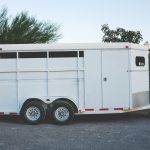Machinable stainless steel products are today used in almost every industry possible. However, stainless steel machining is relatively difficult as compared to other softer materials. Because its tensile strength and hardness are quite high. Therefore, it requires special methods, and metalworking processes must match stainless steel’s properties to deliver the best results. This guide explains stainless steel grades and how to machine the material.
What Is Stainless Steel?
Stainless steel is an alloy of iron and chromium. It may include carbon to enhance certain properties. Chromium content is always over 11% to provide corrosion resistance. In addition, Iron is strong and hard-wearing but rusty. Chromium eliminates this weakness by preventing corrosion and abrasion. The given properties make stainless steel a rather universal and reliable material.
Stainless steel is relatively easy to machine. It calls for knowledge of the material and appropriate ways of cutting. However, when you master material properties, and the optimal technique to employ, it becomes easy to machine and satisfying.
Types of Stainless Steel Grades For Machining
Stainless steel includes more than 150 varieties. Many consumers regard it as a single alloy, but it is a group of metals. These grades are grouped into 5 main classes according to properties and applications.
Austenitic Stainless Steels
Austenitic stainless steel machining grades are the most frequently used types. These have an austenite microstructure and possess low magnetic properties. It cannot be heat-treated for a harder surface, but it has high toughness. The presence of nickel, manganese, and nitrogen define its properties.
- Subgroups: AISI 200 and AISI 300 series. Molybdenum may increase the corrosion resistance of steel.
- Examples: Type 304, type 316, alloy 20, and type 321H.
Properties:
- Corrosion Resistance: Excellent
- Heat Treatable: No
- Magnetic: Non-magnetic
- Toughness: High
- Ductility: High
- Welding Ability: Good
- Chromium Content: ~18%
- Nickel Content: 8–12%
Applications:
- 200 Series: Washing machines, architecture, dishwashers.
- 300 Series: Aerospace parts and accessories, mining equipment and accessories, storage accessories.
Ferritic Stainless Steels
Ferritic machinable stainless steel grades have been around since 1912. But, these were not popular until the 1980s. They are part of the AISI 400 series, characterized by magnetic characteristics and increased resistance to corrosion.
- Examples: Type 405, Type 409L, Type 430, Type 439.
Properties:
- Corrosion Resistance: High
- Magnetic: Magnetic
- Toughness: Medium
- Welding Ability: Low
- Chromium Content: 10.5–30%
Applications:
- Crocker kitchenware, automotive parts, industrial tools.
Martensitic Stainless Steels
Martensitic stainless steel is a high-strength steel. They are easily responsive to heat treatments. Thus suitable for strength-critical applications.
- Examples: X12Cr13, X20Cr30, X50CrMoV15.
Properties:
- Corrosion Resistance: High
- Magnetic: Mostly magnetic
- Toughness: Varies with tempering
Applications:
Surgical instruments, guns, knives, and ball bearings.
Duplex Stainless Steels
Duplex stainless steels consist of ferritic and austenitic microstructures. This combination offers better strength and resistance to stress corrosion.
- Examples: X2CrNiN22-2, X2CrNiMoCuN25-6-3.
Properties:
- Corrosion Resistance: High
- Toughness: Excellent
- Magnetic: Magnetic
Applications:
Heat exchangers, piping systems, condensers, and reactors.
Precipitation Hardening Stainless Steel
Precipitation-hardening stainless steel machining grades are of three types. This includes Precipitation-strength stainless steel, Stainless Precipitation hardening steel, and Stainless precipitation hardening steel. Age hardening is a significant strength of precipitation-hardening steels. They improve their performance when mixed with titanium, copper, or aluminum.
- Example: 17-4 PH Steel.
Applications:
Offshore structures, power plants including nuclear, aircraft parts.
Techniques For Stainless Steel Machining
Machining stainless steel involves various processes, depending on the desired results and the material’s behavior. Here’s an overview of key machining stainless steel processes:
1. CNC Milling
CNC Milling is widely used in the stainless steel industry as a key machining process. It uses spinning cutting tools to cut a comparatively, non-moving material. The process guarantees high accuracy and fine surface quality. However, the choice of the tool is crucial – improper tools or too high speeds result in frequent tool wear.
2. CNC Turning
CNC Turning involves a cutting tool to carve the material. Generally, the tool remains stationary while the workpiece rotates in the process of cutting or eradicating the unwanted material to form the needed shape. Turning is normally used when working on austenitic stainless steel material of construction. Reducing tool overhang is important to minimize vibrations and provide precise results.
3. CNC Drilling
Drilling is normally a second operation to make holes for screws, and fasteners. It is compatible with other processes and crucial for subsequent joining in stainless steel parts.
4. Threading
Threading means the process of applying internal or external threads on the components of stainless steel for fasteners or mounting screws. It is mostly used in pipes tubes and many industrial parts.
5. Laser Cutting
Laser cutting uses a focused light beam to vaporize material and as such is ideal for thin sheets of stainless steel. Although it can minimize the tool wear, regardless, it is expensive and needs specialized operators.
6. Grinding
The grinding process improves surface finish and accurate dimensions. Because the material is removed in small steps. Abrasive wheels remove spurs from such operations as welding and fashion sharp edges on stainless steel parts.
7. EDM Electrical Discharge Machining
EDM is an electrochemical process. In the process, the metal surfaces are removed by applying high-frequency electrical pulses. It is suitable for complex patterns but the material thickness is a drawback. Thus, it is difficult to regulate.
8. Waterjet Cutting
Waterjet cutting is done by focusing high-pressure water to cut through a piece of stainless steel. It is well applicable for thicker sheets while it has detrimental effects on the grades with less corrosion resistance.
Stainless Steel Machining: Is it Hard To Turn Stainless Steel Into Desired Shape?
Machining stainless steel is problematic because of its characteristics. However, these problems can be avoided by using appropriate procedures.
- Heat Generation: The problem that affects the corrosion resistance of the alloy is overheating. This is visible in the surface color or a tinted hue.
- Pickling Solution: Overheating effects can be prevented by pickling. This process uses acid solutions, like hydrochloric and sulfuric acid. It removes oxidation layers from the surface.
- Tool Wear: Tool wear is likely to be promoted by the hardness of stainless steel. Using the right cutting tools and speeds increases the life of the tools.
- Work Hardening: Stainless steel has a characteristic of deforming when subjected to stress. It becomes hard to machine or work in the next process. This problem can be solved by keeping constant pressure on tools while cutting or avoiding halts during the operation.
Challenges with Stainless Steel Machining
The main difficulties in machining stainless steel are as follows.
- Causes high tool wear.
- The required cutting force is high.
- Produces poor chip control.
- Has high hardness, ranked between 160-190 VHN at maximum. These factors are responsible for shortening the tool’s life.
- Specific equipment requirements
Grades of Stainless Steel Difficult to Machine
The typical challenging machining stainless steel grades are;
- 304 Stainless Steel
- 316 Stainless Steel
- 410 Stainless Steel
- 430 Stainless Steel
- 2205 Duplex Stainless Steel
Easiest Stainless Steel Machining Grades
- 416 Stainless Steel: Good Machineability
- 400 Series Stainless Steels: Easily Machineable
- 300 Series Materials (304 and 316)
The higher WH(Work Hardening) properties are more problematic, as will be subsequently seen.
Economical Stainless Steel Machining Grades
Here are some types of stainless steel commonly used for machining;
- Type 409 Stainless Steel
- Type 430 Stainless Steel
- Type 304 Stainless Steel
- Type 316 Stainless Steel
- Type 410 Stainless Steel
- Type 420 Stainless Steel
Advantages of Machining Stainless Steel
Stainless steel does not corrode easily. Therefore, it features strong functional benefits. Moreover, It exhibits flexibility and can be molded, cut, or welded into various forms. There are numerous choices for the appearance of the finish. SS grades are optimal for food packing and medicine. Stainless steel is long-lasting and can easily be recycled.
Flaws of Machining Stainless Steel
In some cases, stainless steel costs more than other metals. It scratches easily and can dent quickly. However, these drawbacks limit its applicability.
Conclusion
Stainless steel machining brings more benefits since it does not rust easily. However, machining can be complicated, and you might need special equipment and tools. Stainless steel has various machining grades, each offering its benefits and limitations. Overall, they offer cost-effective reliable stainless steel products.







